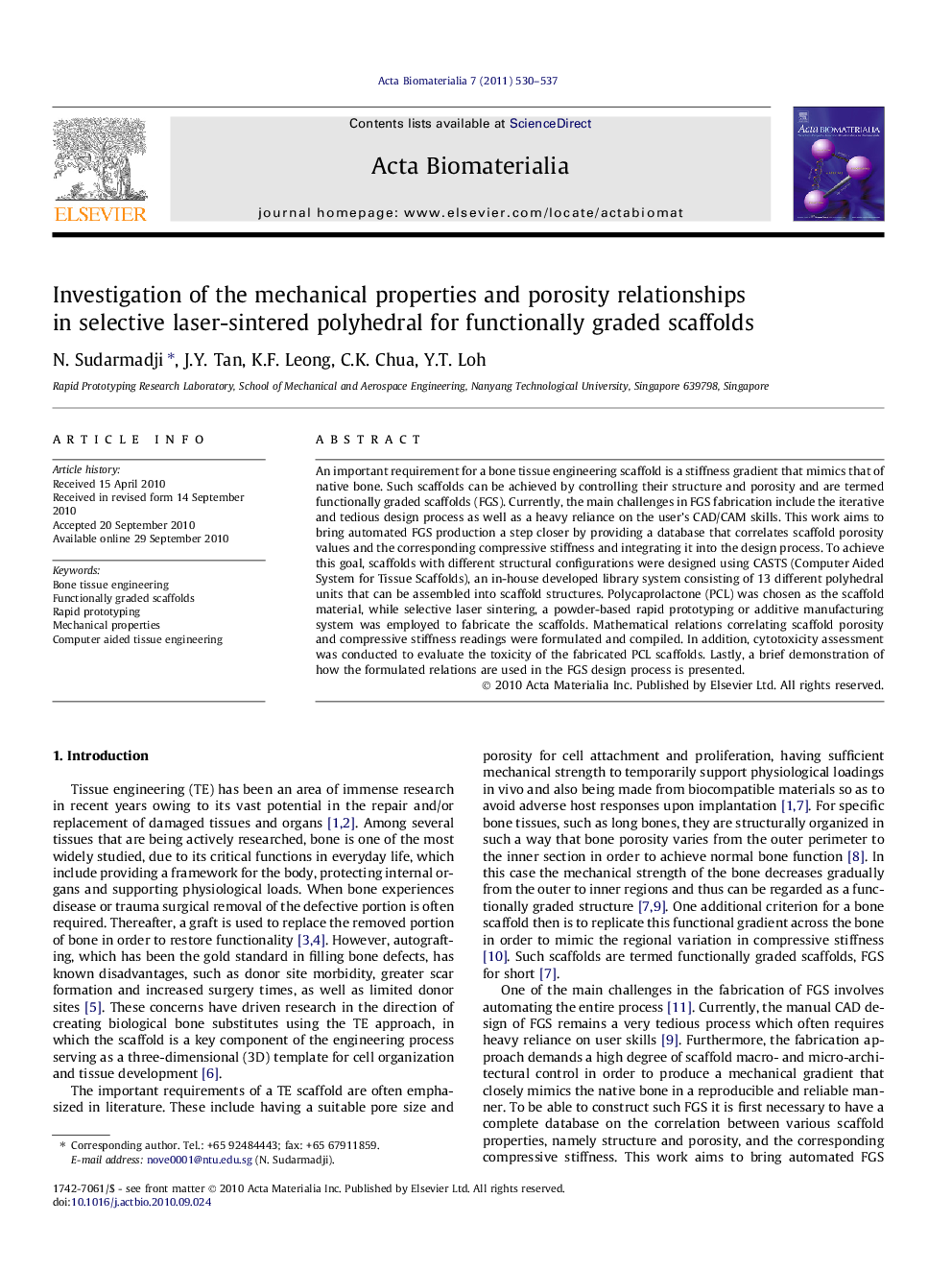| Article ID | Journal | Published Year | Pages | File Type |
|---|---|---|---|---|
| 960 | Acta Biomaterialia | 2011 | 8 Pages |
An important requirement for a bone tissue engineering scaffold is a stiffness gradient that mimics that of native bone. Such scaffolds can be achieved by controlling their structure and porosity and are termed functionally graded scaffolds (FGS). Currently, the main challenges in FGS fabrication include the iterative and tedious design process as well as a heavy reliance on the user’s CAD/CAM skills. This work aims to bring automated FGS production a step closer by providing a database that correlates scaffold porosity values and the corresponding compressive stiffness and integrating it into the design process. To achieve this goal, scaffolds with different structural configurations were designed using CASTS (Computer Aided System for Tissue Scaffolds), an in-house developed library system consisting of 13 different polyhedral units that can be assembled into scaffold structures. Polycaprolactone (PCL) was chosen as the scaffold material, while selective laser sintering, a powder-based rapid prototyping or additive manufacturing system was employed to fabricate the scaffolds. Mathematical relations correlating scaffold porosity and compressive stiffness readings were formulated and compiled. In addition, cytotoxicity assessment was conducted to evaluate the toxicity of the fabricated PCL scaffolds. Lastly, a brief demonstration of how the formulated relations are used in the FGS design process is presented.
